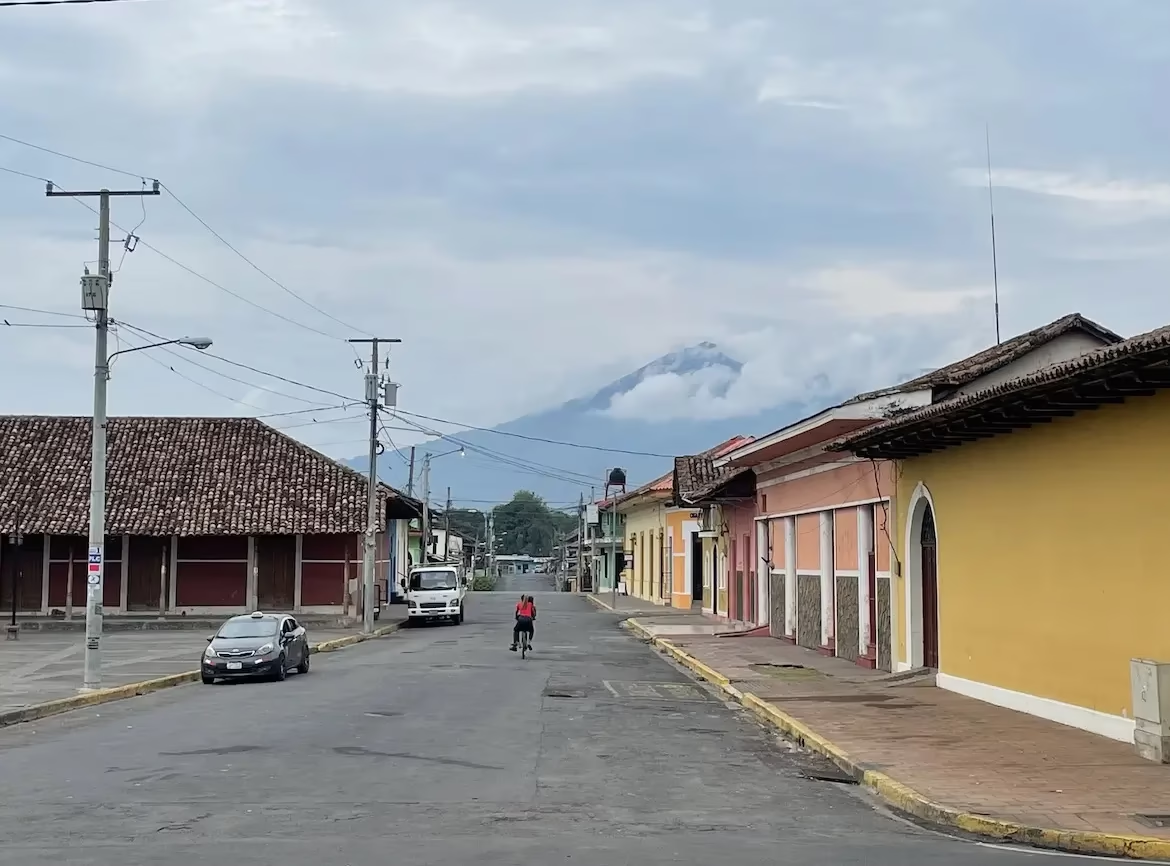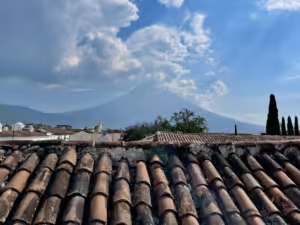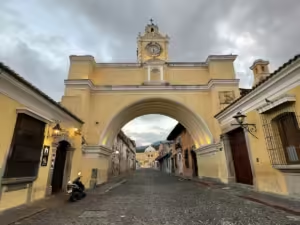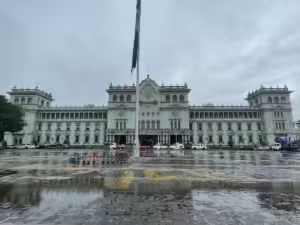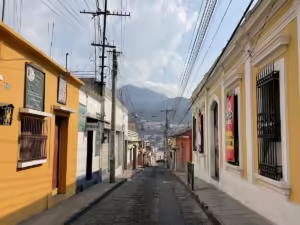Nicaragua will always hold a piece of my heart. It was the first country I’d ever traveled to independently, and where I fell in love with both travel and Latin America. Before visiting, I remember reading about the Nicaraguan civil war and Iran Contra scandal. It made me realize that the U.S. government weren’t always the good guys.
On that fateful trip to Nicaragua as a starry-eyed young backpacker, more years ago than I’d care to admit now, I was captivated by this vibrant land of fiery revolutionaries, smoldering volcanoes, warm tropical lakes and wonderfully open, friendly people. My wife and I returned to Nicaragua as part of our odyssey through Central and South America. I was excited to share this magical land with her, hoping it might entrance her as it once entranced me.
Unfortunately, things change. Nicaragua is still beautiful and the people still friendly. But the country seems to have lost a bit of the easy travel magic that so seduced me oh so many years ago. It’s still a fantastic country and well worth a visit, but things have gotten much tougher and a little bit uglier than they used to be.
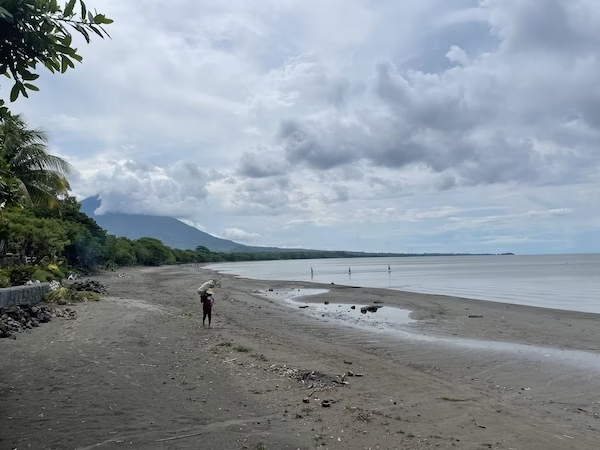
Things to Know Before Traveling to Nicaragua
Nicaragua is still a popular tourist destination and firmly cemented as a stop on the Central America backpacker trail. However, the country isn’t quite the easy, laid-back sort of travel spot like neighboring Costa Rica or even Guatemala. Part of that is due to Nicaragua’s turbulent history, both old and recent.
A Brief Lesson in Nicaraguan History
Nicaragua, like most of Latin America was originally populated by indigenous groups and conquered by the Spanish. The country suffered a series of civil wars between Liberals mostly out of León and the conservatives based in Granada. It was also a major thoroughfare for North Americans traveling to California in the days before the railroads.
In 1855, a Tennessean named William Walker invaded Nicaragua, declared himself president and re-instituted slavery. It took the combined armies of every other Central American nation to defeat him.
In 1909, U.S. marines invaded the country and occupied it until 1933. The only general to consistently oppose the marines, as well as US influence was the national hero, Augusto Sandino. Sandino was assassinated by future dictator Anastasio Somoza Garcia.
Somoza and his family ruled Nicaragua for decades with an iron fist. In the 1960s, a group of students formed the Sandinista National Liberation Front, or FSLN and launched a guerilla war against him. They finally overthrew Somoza in 1979, leading to a brief period of peace and social reforms. The FSLN lost the elections of 1990.
The Sandinistas returned to political power in 2006 under the presidency of Daniel Ortega. Ortega has since changed the constitution to let himself run for president indefinitely, alongside his wife and co-president, Rosaria Murillo.
Protests erupted against the regime in 2018, leading to over 300 deaths and thousands of injuries. The government forced hundreds of opposition figures into exile and stripped of their citizenship, including many former Sandinistas.
Since the protests, the country just doesn’t quite have the jubilant, hopeful feel to it that it had even in the early 2000s. People are still friendly, but everyone seems a bit more beaten down and the rough edges are just a bit rougher.
If you’d like to read more about Nicaragua’s fascinating but turbulent history, I’ve written a longer post here that still doesn’t do it justice. Understanding Nicaragua: A History Guide for Travelers to This Land of Resistance and Resilience
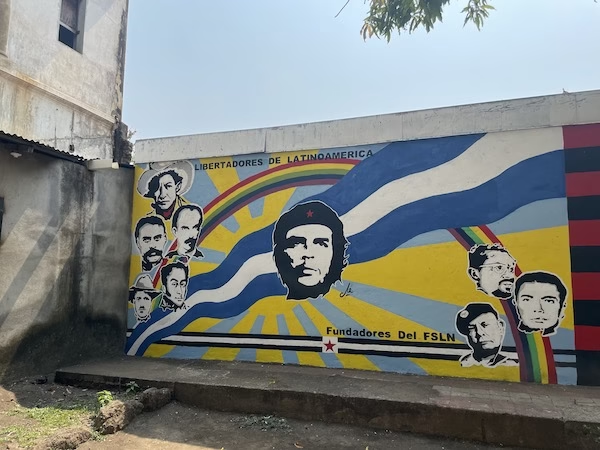
Practical Advice About Nicaragua
But don’t let Nicaragua’s recent history or its current politics deter you from visiting. The country is still a beautiful, fascinating place to travel. As a tourist, there’s very little chance anything I mentioned above will affect you in anyway. Plus, a lot of Nicaraguans rely on tourism dollars, and they could really use the money.
If your Spanish is up to it, I would definitely take the opportunity to talk to locals about their opinions and experiences. It’s one thing to read about a violent protest online, it’s another thing entirely to talk to someone who has experienced it.
Keep this bit of advice in mind: Nicaraguan society is still quite polarized, and Nicaraguans are passionate about their opinions. Don’t assume that you know better than they do about what’s going on in their country and keep your opinions to yourself unless asked. Take the opportunity instead to listen and learn.
Nicaragua is Poor. Very Poor.
Nicaragua is one of the poorest countries in the entire Western Hemisphere. It’s GDP vacillates somewhere between Honduras and Haiti. The poverty here is much more palpable than in neighboring countries, too. Crumbling colonial buildings quickly give way to literal tar paper shacks. Horses so skinny their ribs are visible pull carts down the streets of major cities.
Household items, such as refrigerators, are considered luxury items that only a handful of people can afford. That blew my mind. I thought everybody had a refrigerator these days. It’s something I know I no longer take for granted.
Traveling to Nicaragua was the first time that I’ve ever confronted actual, real, brutal poverty face to face. I didn’t grow up rich by any means, but being from the affluent global North, the poverty in Nicaragua was quite a shock. It can come as a shock to those of us who grew up in the rich global North.
It’s also something we should all see and think about. Our global system is built on a lot of greed and exploitation. Visiting a poor country like Nicaragua can help to put a human face on the consequences of that greed and exploitation.
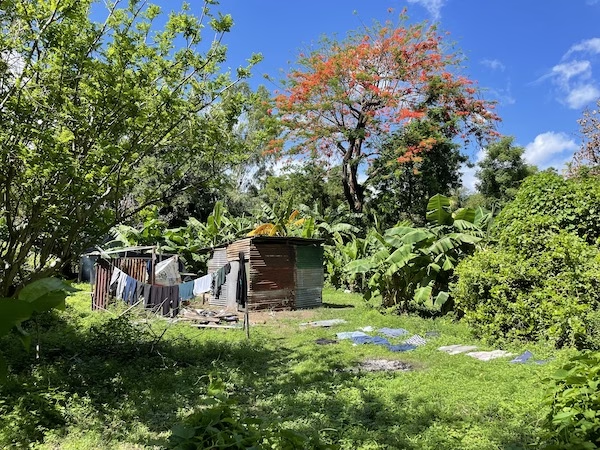
Is Nicaragua Safe for Travelers?
Before going back to Nicaragua for the second time, I’ll admit I was worried about crime. The U.S. State Department website lists Nicaragua as level three “reconsider travel.” There are all sorts of scary warnings about the government arbitrarily detaining U.S. citizens and increases in assaults and armed robberies. In the end, we decided to ignore the warnings and I’m glad we did.
Despite the widespread poverty, Nicaragua is generally very safe. It has somehow managed to avoid the massive gang violence that’s plagued its neighbors. And unless you’re a missionary or something, the police and government forces aren’t likely to bother you. They want you to come as a tourist.
Of course, this doesn’t mean you shouldn’t keep your wits about you. Travelers do get mugged here from time to time. If this happens to you, just give the mugger what they want and chances are they’ll let you go. No cell phone is worth your life.
Because of the contradiction of rich tourists gallivanting around a poor country, Nicaragua also suffers from more than its share of scammers and con artists . We were over-charged by taxis, restaurants and coffee shops. Every single attempted scammer we came across spoke English, and every place that over-charged us was a higher end touristy spot. We had no problems in the smaller, local Spanish speaking joints.
Women should also be wary that cat calling can be especially bad in Nicaragua. Technically, this is illegal, but are you really going to go down to the police station and file a report? Try and remember these guys were raised in a toxically masculine machismo culture. They’re mostly weak men trying to show off. Do your best to ignore them.
I have some more thoughts about safety and crime in Central and South America. Read them here: Rethinking Travel Safety and Crime in Latin America
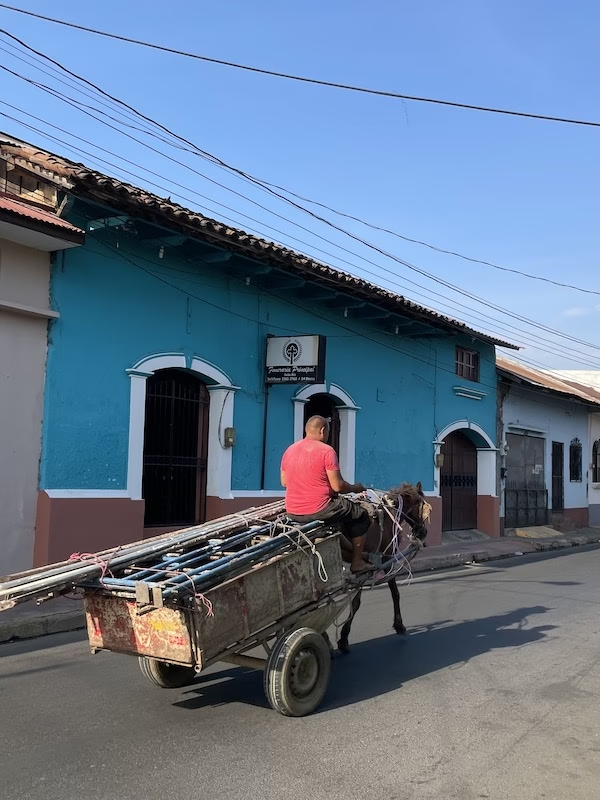
How to Get Around Nicaragua
The best, and in my opinion only real way to travel around Nicaragua is by bus. Local buses go pretty much everywhere and they’re cheap and relatively easy to use. The local buses are almost always old North American school buses. Don’t expect comfort. Luckily, Nicaragua isn’t that big, so you’ll never be on the bus more than a few hours.
The website Central Coasting has a ton of helpful information on local buses going to pretty much anywhere in Nicaragua you’d want to go. Generally speaking, though, you go to the local bus station and listen for the guy shouting your destination’s name like some sort of crazed auctioneer: “Managuamanaguamanagua!”
You’ll get on the bus and an attendant will come by and take your fare. Tell him where you’re going and he’ll make sure you get off in the right place. In my experience, Nicaraguan bus attendants are angels come down from heaven. Sometimes they have trouble making change, but they always somehow remember what they owe to whom and will always come back with the correct amount and a friendly fist bump.
There’s a fast-talking, English-speaking, con artist in the Rivas bus station who likes to try and push unsuspecting gringos into overpriced cabs. He started following us through the bus station as we were making a transfer, and the bus attendants quickly pushed him away from us, and moved to physically block him so we could get on our bus in peace. Like I said, angels.
Generally, taxis are fine, but try and get an idea what a fare should cost ahead of time. This varies, so you’ll have to ask a local. Always, always, always agree on a price before getting into the cab. And make sure the price agreed to is the total and not per person.
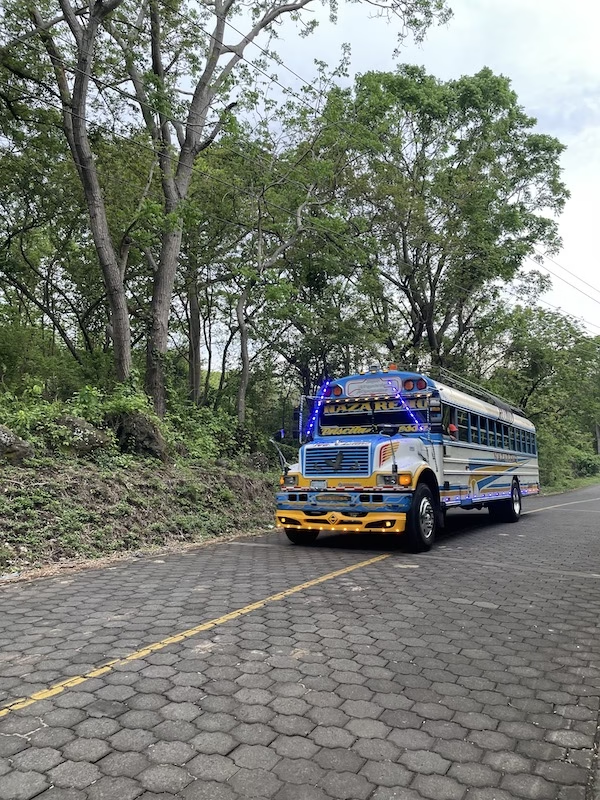
Other Things to Know Before Traveling to Nicaragua
Of course, in Nicaragua, for every conniving con artist, there are five other kind, decent human beings who want you to enjoy your travels in their country. In general, Nicaraguans are lovely, warm-hearted and passionate people who are more than willing to help a traveler in need. They are, however, a little more formal when speaking. Default to “usted” if you’re speaking in Spanish.
The Nicaraguan national dish is gallo pinto, essentially rice and beans. Nicaraguans eat gallo pinto for breakfast, lunch and dinner. I like gallo pinto, but to be completely honest, it’s never going to win any culinary awards. Don’t expect the explosive spices and flavors of Mexico.
The best Nicaraguan food is actually fruit. There’re tons of wonderful, delicious fresh fruit available in Nicaragua’s markets. You can also find little shops selling batidos, fresh blended fruit smoothies, in most towns.
Those batidos go down well in Nicaragua’s stifling heat. Nicaragua is crazy hot. Get used to being sweaty pretty much all the time. Drink a lot of water, wear sun protection and don’t be afraid to take a siesta in the afternoon.
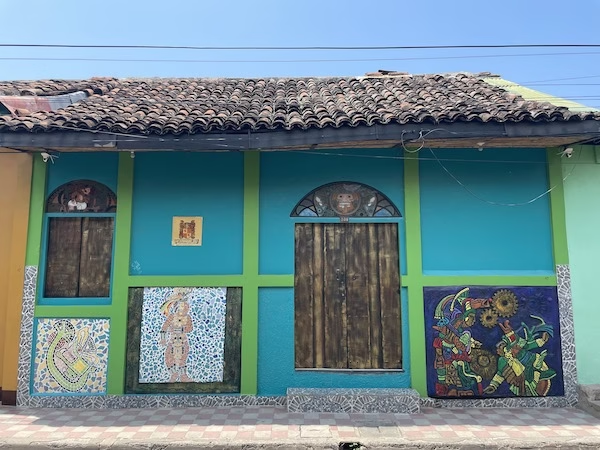
Where to Go in Nicaragua
If you can handle the heat, there are a number of worthy destinations throughout the country. Nicaragua is known as the land of lakes and volcanos. It has both those things, but there are also wonderfully crumbling colonial cities and tropical forests to explore.
On one of the most fun, but also most stressful, aspects of travel is finding and booking places to stay. These days you have options ranging from dirt cheap hostel dorms to luxurious White Lotus style resorts. Thankfully, the internet is here to make finding accommodation easier.
Hostelworld is the go to app for finding hostels. For everything else, there’s Booking.com. If you book through either of the previous links, I’ll gain a small commission at no extra cost to you.
Granada
Granada, Nicaragua, nicknamed the “gran sultana”, is easily the jewel on Nicaragua’s tourism crown. This colonial city, resting in the shadow of Volcán Mombacho, and on the shores of Lake Nicaragua is charming and easily walkable. It isn’t quite as restored nor instantly photogenic as Antigua, Guatemala, but that crumbling elegance adds to its charm.
Granada has a lot of other tricks up its elegant neo-classical sleave. You can spend a lovely day kayaking around Las Isletas, a mini-archipelago of small volcanic islands scattered near the lakeshore. Granada is also a great place to base yourself for excursions to the smoldering crater of Volcán Masaya and the smooth blue waters of Laguna de Apoyo.
Most importantly, the people of Granada are friendly and welcoming. The city was once verging on the edge of over-tourism, but the 2018 protests seem to have scared most of the expats and digital nomads away. Central Granada is still quite safe, so feel free to wander the streets at night and maybe take in a cultural performance at the Parque Central. Granada is a chill, authentic feeling sort of town and a wonderful place to spend some time.
Read more about Granada here: Granada, Nicaragua: a Colonial Beauty That Might Steal Your Heart
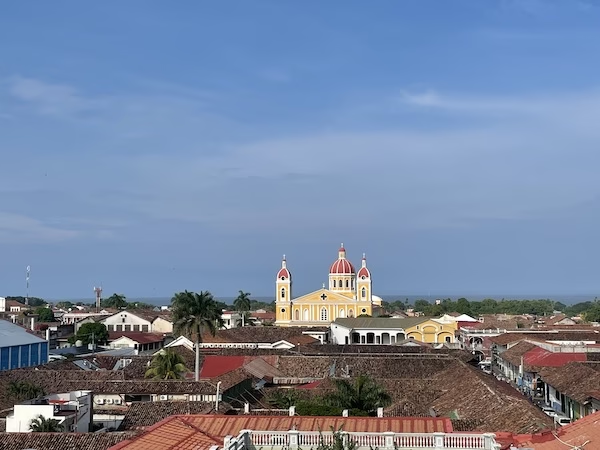
Isla Ometepe
I don’t think there’s anywhere else in the world like Nicaragua’s Ometepe Island. Twin volcanos rise up from the waters of Lago Cocibolca, one is smoldering and bare, the other long dormant and draped in lush tropical forest. A narrow isthmus ringed by a brown sand beach connects the two volcanoes. You might see the best sunset of your life here.
There’s plenty to do on Isla Ometepe besides just watch the sun sink below the horizon. You can rent a scooter or a bike to explore the island’s nooks and crannies, take a kayak trip through the narrow, caiman infested Río Istián, swim in a natural pool, look for petroglyphs, or just take a dip in the lake. Oh, and I suppose you could climb the volcanos, too, but I think Ometepe’s tropical heat makes it far more suited to kicking back with a cold beer than any sort of strenuous hiking.
Discover more about the gorgeous Isla Ometepe here: Uncovering the Magic of Isla Ometepe: a Travel Guide to Nicaragua’s Twin Volcanic Island
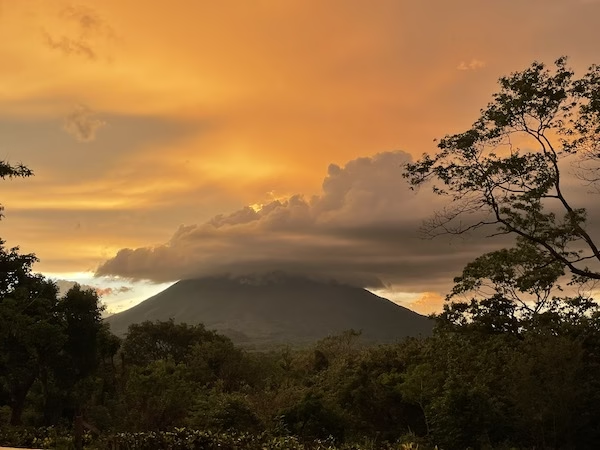
León
Fiery hot León is Granada’s colonial rival. Where Granada still retains a certain refined elegance, Leon is full of youthful revolutionary energy. The town is home to numerous universities and is famous for being the place that sparked the revolution against the dictatorship.
León is also home to Central America’s largest cathedral. It’s big and white and you absolutely can’t miss it looming over the parque central. The city hosts a number of excellent museums, including the Ortíz Gurdián Foundation Art Center, which might be the best modern art museum I’ve been to. When you get sick of museums and old buildings, there’s a nearby volcanic black sand beach that’s worth an afternoon.
León has established itself pretty firmly on the backpacker trail. This was where we ran into the most scammers, as well as a few unfriendly locals. So, keep your wits about you. It’s generally fine, but some parts felt less than safe for wandering.
Read more about León here: León Was Nicaragua’s Biggest Travel Letdown
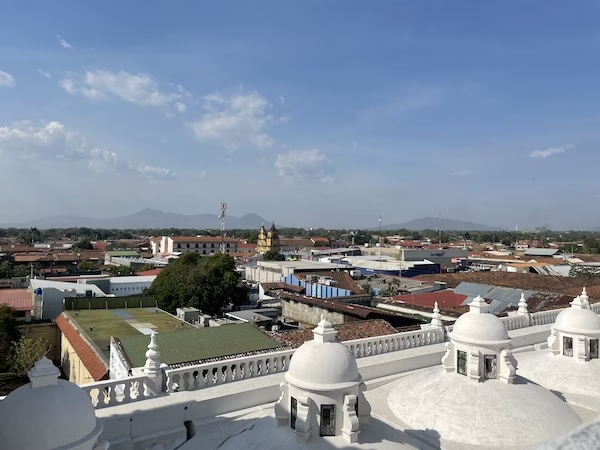
Managua
Managua is Nicaragua’s big, bad capital city. It has a bad reputation, and while I think that reputation is undeserved, there isn’t any great reason to travel here. The city is light on sights, especially compared to Granada and Leon. Most of the center still hasn’t been rebuilt since it was destroyed in the earthquake of 1972.
Unless you’re particularly interested in gigantic statues of Augusto Sandino or convoluted yellow tree sculptures, I’d say skip Managua and just head another hour to Granada.
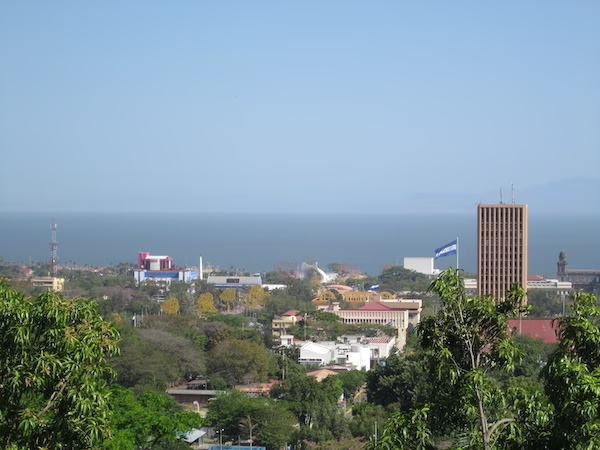
Rio San Juan
The Rio San Juan is a lovely jungle river on the border with Costa Rica. This is where Vanderbilt’s steam ships would ferry passengers heading to California and where Today, humid, tropical rainforest drenches the river.
The little town of El Castillo is a cute riverside village that’s only accessible by boat. It houses an old Spanish fort that was built to protect against pirate attacks. The town is a good jumping off point for the Indio Maíz Biological Reserve, which is home to all sorts of interesting jungle animals and plants.
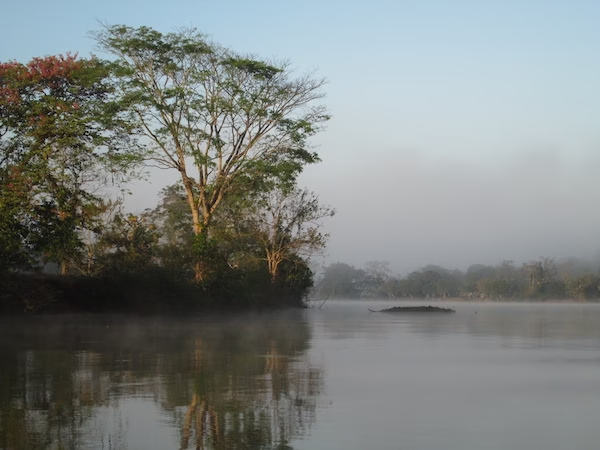
San Juan del Sur and the Corn Islands
I have not been to San Juan del Sur or the Corn Islands. People really like San Juan del Sur, but it seems like it’s just another party surf town. We had enough of that in El Tunco, El Salvador. People also really like the Corn Islands, and I’d like to go myself someday. You can only reach them by plane or arduous boat trip though, and it just wasn’t in the cards for us. Maybe next time.
What to Do in Nicaragua
There are plenty of things to do in Nicaragua. Whether you like to explore colonial cities, climb up an active volcano or just chill on the beach, there’s plenty to keep you busy. Don’t worry about planning tours or activities in advance. You can do most activities independently, otherwise your hotel or hostel will be more than happy to arrange it for you.
If you absolutely must plan your activities in advance, may I suggest Get Your Guide. We’ve used them a couple of times and their tours are generally much cheaper than other sites. If you book through this link, I’ll get a small commission at no extra cost to you. Click here to see tours in Nicaragua.
Hike Up a Volcano
You can hike up a volcano pretty much anywhere in Central America. Guatemala, for example, is chock full of them. But where else but Nicaragua can you peer into a smoldering, red hot, active crater?
Volcán Masaya is easily a highlight. There’s absolutely nothing that compares to the experience of staring down into a crater full of glowing red lava. Truth be told, you don’t really get to hike much, the parking lot is right next to the edge of the crater. It’s still an amazing experience.
Fun fact: the Spanish thought Volcán Masaya was a portal to hell. Staring down into the boiling lava, it kind of makes sense.
There are, of course, other volcanoes to climb if you’re looking to do some damage to your knees. Both of Ometepe’s twin peaks are climbable. Lots of people talk about volcano boarding near Leon, but to be honest it sounds sort of stupid and tacky to me, so I’ve never done it and I probably never will. Every volcano hike requires a guide. Because, you know, they’re volcanoes. They can be dangerous.
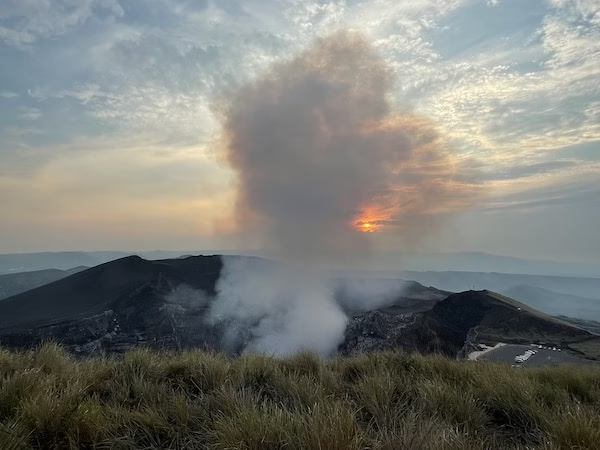
Go Kayaking
The waters of massive Lago Cocibolca/Lake Nicaragua seem to be begging to be kayaked. They rent kayaks locally, although mostly as part of guided tours. While it’d be fun to go off on your own, just remember hiring guides provides a lot of much needed income to local people.
Also, in case taking a guided kayak tour feels too safe, remember that Lake Nicaragua is home to bull sharks. Bull sharks are the only shark species that can survive in fresh water and they can be quite aggressive. They’re also rare, so your chances of coming across one are small, but they’re there.
If you want to brave the bull sharks, you can kayak on Isla Ometepe and in Las Isletas just off of Granada. I definitely recommend kayaking Las Isletas rather than taking the bigger boat tour, since it’s way more fun to be down in the water moving at a slower pace.
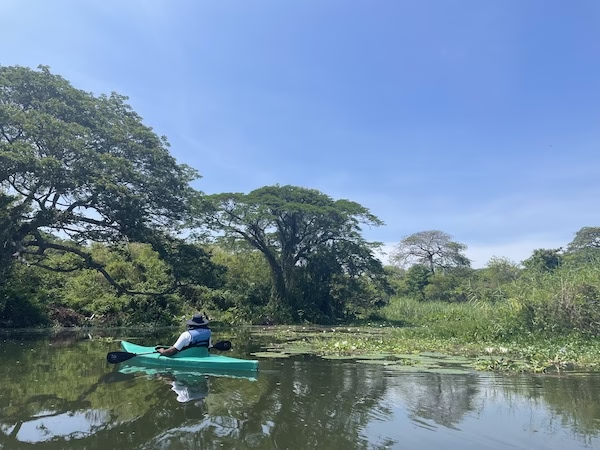
Explore the Colonial Architecture
León and Granada are both great cities to wander around and check out the architecture the Spanish left behind. Many of the old adobe buildings are slightly crumbling and in a state of disrepair. I think this adds to the charm. And what else do you expect for centuries old buildings in a poverty-stricken country?
Highlights are definitely the cathedrals in both cities. León’s mighty white cathedral is very impressive, and Granada’s mellow yellow alternative feels quaint, though just as beautiful. León and Granada are the only two cities that have really kept a lot of their colonial core, but you may find the odd church or adobe house throughout the country.
Take Spanish Classes
For Spanish classes in Central America, nothing rivals Guatemala. However, if you can’t make it there, or you want to do a bit of extra credit, Nicaragua might be the next best thing. We took Spanish classes in Granada, and while the school was underwhelming, the homestay was absolutely fantastic. Do your research and perhaps you can find a better school, but be sure you opt for the home stay. It’s a great way to improve your language skills while gaining insight into the country and the culture.
Nicaraguan Spanish is very different than standard Spanish. Like Venezuela and other Caribbean countries, Nicaraguans have the tendency to swallow the ends of words, especially “s” sounds. “Bus” ends up sounding something like “buh.” They also use “vos” instead of “tú” which has its own set of rules and conjugations. Stick to “usted” just to be safe.
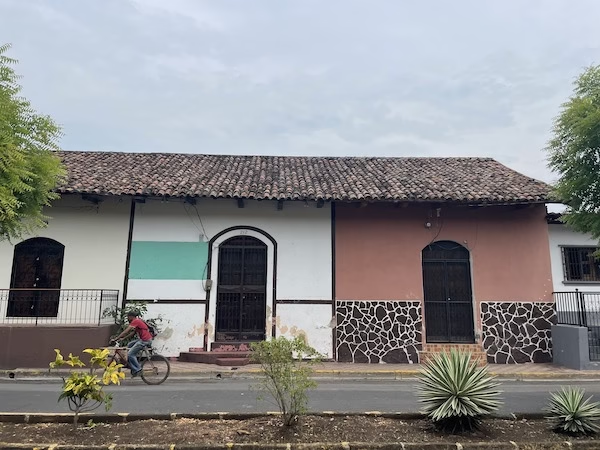
Some Final Thoughts on Nicaragua
Nicaragua will always hold a special place in my heart. I’d recommend anyone with a sense of adventure visit there, even though it isn’t the easiest place to travel. The poverty and the political situation have, shall we say, complicated things. Don’t go to Nicaragua expecting a relaxing vacation in fancy resorts. In fact, don’t bother reading this blog if that’s what you want.
Nicaragua is a place to go for experiences and adventures, rather than rest and relaxation. That’s not to say it isn’t fun. There’s plenty of fun to be had amidst the lakes and volcanoes that attract thousands of tourists. You may have to confront your privilege, especially if you’re a relatively wealthy North American. Despite that, or maybe because of it, Nicaragua remains a fantastic place to travel.
Useful Websites for Traveling Nicaragua
As much as we might long for the days when you could show up to a town with nothing more than a beat-up guidebook and a sense of adventure, today much of traveling involves being glued to our phones making bookings. I’ve compiled some helpful apps and websites below that at least help make those bookings more convenient so you can spend less time staring at your phone and more time exploring at your surroundings. Some of these sites are affiliate links that give me a small commission at no cost to you if you chose to book through them. All of them are sites I’ve used personally and have no problem recommending.
Just be sure to do your due diligence as much as possible. Only hire local guides and try as much as possible to stay in locally owned hotels and hostels so that your hard earned travel dollars actually go to support the local economies of the places you visit.
Booking.com is basically the world’s only hotel booking website. They have hotels, guesthouses and vacation rentals all over Nicaragua.
Hostelworld is the go-to site for booking hostels. If dorm rooms and shared bathrooms are your thing, you’ll find hostels all over Nicaragua.
Get Your Guide offers tours and activities all around the world. Unlike some other sites and apps that do the same thing, you can actually find some reasonably priced deals here.
Centro Coasting is a great website to look up bus routes and times throughout Central America. Schedules change regularly, and the site is sometimes not as up to date as you’d like. However, it’s a good resource to help give you an idea when the buses leave, or at least get you to the right terminal.

